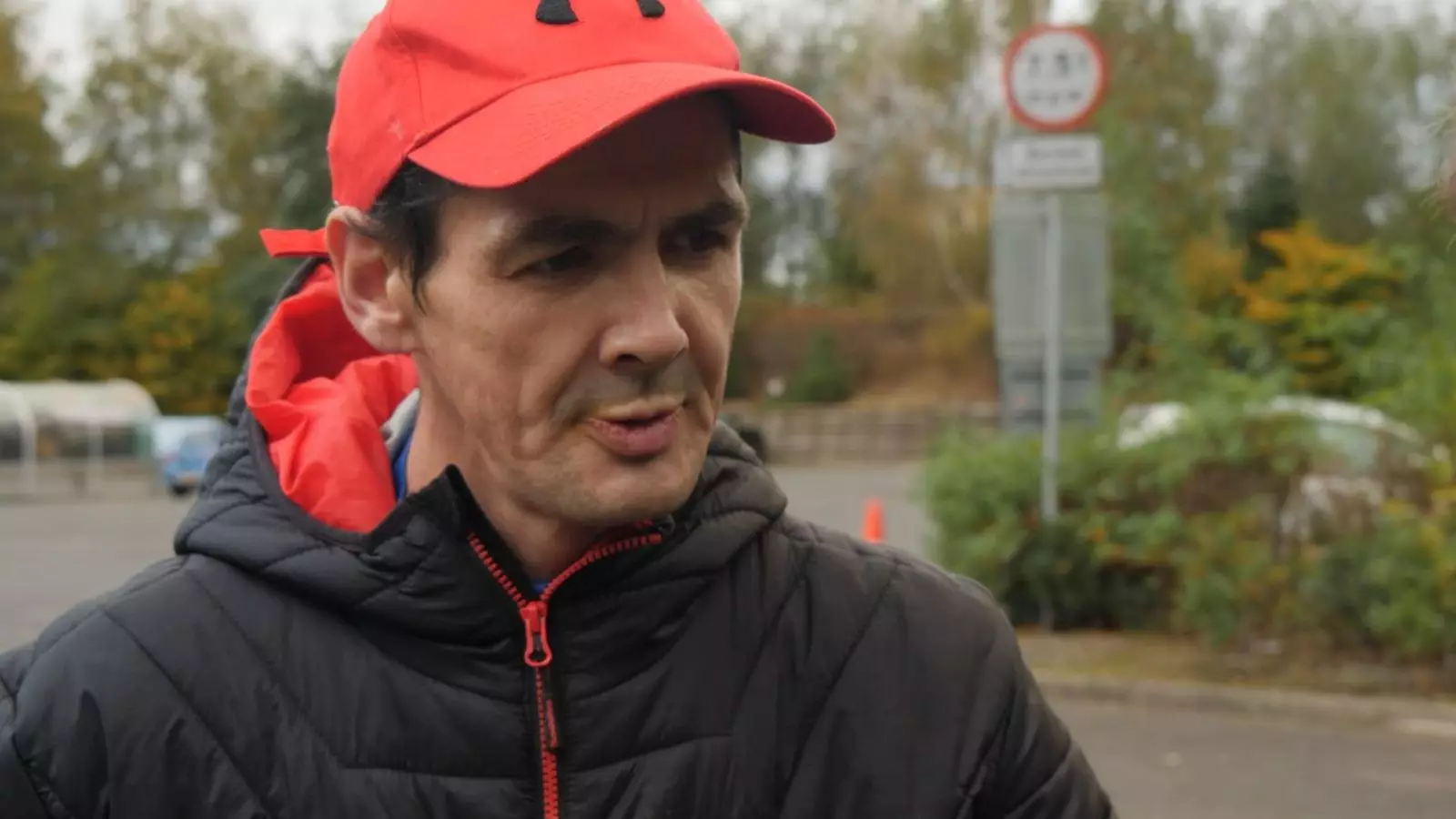On a biting morning in east Glasgow, the chilling air is accentuated by the palpable desperation of Chris, a 41-year-old man grappling with addiction. His solitary focus is on obtaining his first fix of the day, a narrative that typifies the harrowing reality many face in this area. As he marches down the street, the syringe filled with a brown liquid is emblematic not just of his addiction, but of the broader societal crisis emanating from drug misuse. Chris’s loud proclamation of his drug’s price and ease of acquisition illustrates a grim normality juxtaposed against a backdrop of community life as vehicles traverse the housing estate.
The roots of Chris’s addiction can be traced back to a personal tragedy—the murder of his mother in 2007. This seminal event served as a catalyst, thrusting him into a cycle of crime and substance abuse that has persisted for nearly two decades. However, it is not just the trauma of his past that occupies Chris’s mind. In his current state, the immediacy of fulfilling his craving overshadows everything else. “I just need to get this in me,” he admits, reflecting a raw honesty about the depths of his addiction.
Chris’s choices lead him to an unkempt corner of a supermarket car park, a makeshift narcotics den that symbolizes the degradation associated with addiction. Nestled amidst bushes littered with blood-stained needles, the setting starkly contrasts with the innate human dignity that often remains obscured in times of desperate need. Crushed petrol jerry cans and discarded paraphernalia serve as reminders of how this environment fosters both danger and despair.
Despite the grotesque reality surrounding him, Chris methodically prepares to inject himself. This moment, stripped of dignity and marred by hardship, is a profound commentary on the toll addiction exacts on individuals. His sigh of discontent as he searches for a suitable spot on his body to inject epitomizes the loss of autonomy that accompanies drug dependency. The silence that envelops him is profound as he succumbs to the fleeting euphoria provided by the heroin, a brief respite from the chaos that envelops his life.
In stark contrast to Chris’s sorrowful reality, a pioneering government initiative lurks just beyond the car park—Glasgow’s first safer drug consumption room. Set to open soon, this facility aims to provide a clinical environment where individuals can consume drugs under medical supervision, devoid of the looming threat of criminal repercussions. Advocates of this program believe it can serve as a pivotal first step towards reducing the staggering drug death rate that has placed Scotland at the forefront of Europe’s addiction crisis.
With 1,172 reported drug-related deaths in the previous year alone, the urgency for effective solutions is palpable. Statistics reveal that opioids such as heroin were linked to approximately 80% of these fatalities, positioning Glasgow as a central point in a city plagued by drug misuse. The promise of a safer environment offers a glimmer of hope, yet skepticism persists among those entrenched in addiction—like Chris, who expresses doubt about the initiative’s efficacy and points to a lack of trust in governmental solutions.
While the concept of a safer drug consumption room has proven successful in other European cities, its adoption in Glasgow has not been without resistance. Critics fear that such initiatives may diminish the perceived risks associated with drug use, diverting resources from crucial treatment and recovery options. The Home Office’s stance—that there exists “no safe way to take illegal drugs”—further complicates the dialogue surrounding this controversial approach.
Nonetheless, proponents argue that international data indicate these environments can effectively mitigate the risks associated with drug use and connect individuals to necessary support services. The upcoming trial will not only gauge the program’s impact on reducing overdose deaths but also how well it integrates with existing law enforcement efforts. While the promise of a safer consumption facility brings hope, it is essential to navigate the potential implications on crime and addiction management carefully.
Despite the potential for preventive measures, the reality for long-time users like Chris can be grim. When posed with the question of whether he has ever contemplated the possibility that his next hit could be his last, Chris’s response is a striking reflection of his despair. “To be honest mate, that would be a blessing,” he asserts, underscoring the desperate circumstances that often accompany addiction.
This willingness to confront the possibility of death reveals the depths of his suffering, as well as the urgent need for effective resources to support those ensnared in addiction’s grip. The journey toward recovery may be challenging, but the very existence of facilities like the safer drug consumption room conveys a message of unyielding hope amid overwhelming adversity.
As Glasgow grapples with its ongoing battle against addiction, it becomes evident that the dialogue needs to shift from one of judgment to one of empathy and understanding, allowing spaces for healing and recovery where none existed before.

